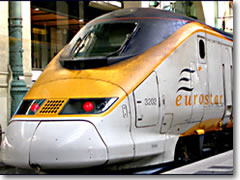- Places
- Plans
- Itineraries
- Experiences

Trains are the best way to travel in Italy.
In Italy, the shortest (and cheapest) distance between two points is usually lined with railroad tracks. The train is the preferred mode of travel by everyone, from farmers and grannies to businesswomen and visitors. Italian trains run on time, are clean and comfortable, and have a vast network that covers almost every minor city.
This section covers in depth the Italian rail system, train tickets and railpasses, train stations, safety onboard Italian trains, the trick of taking overnight trains to save time and money, and tips for saving money on your rail travel.
You can click on those links above for detailed information on each subject, or just scan the quick take of top tips listed below, a collection of all the vital info you really need to know to ride the rails in Italy.
| Rome | Roma Termini |
| Florence | Firenze Santa Maria Novella |
| Venice | Venezia Santa Lucia |
| Milan | Milano Centrale |
| Genoa | Genova Porta Principe |
| Naples | Napoli Centrale |
| Leghorn | Livorno |
| Turin | Torino Porta Nuova |
 Be sure you stamp one end of your ticket at one of the little yellow boxes usually located in the passageways leading to the tracks and strapped to a column at (or near) the head of each track. If you do not, the conductor may fine you (they sometimes give tourists a stern warning, but more and more they are simply imposing the fines regardless).
Be sure you stamp one end of your ticket at one of the little yellow boxes usually located in the passageways leading to the tracks and strapped to a column at (or near) the head of each track. If you do not, the conductor may fine you (they sometimes give tourists a stern warning, but more and more they are simply imposing the fines regardless).| Where is? | Dov'é (doh-VAY) |
| ...train station | la ferroviaria (lah fair-o-vee-YAR-ree-yah) / la stazione (lah stat-zee-YO-nay) |
| ticket | un biglietto (beel-YET-toh) |
| first class | prima classe (PREE-mah CLAH-say) |
| second class | seconda classe (say-CONE-dah CLAH-say) |
| one way | solo andata (SO-low ahn-DAHT-tah) |
| round trip (return) | andata e ritorno (ahn-DAH-tah ay ree-TOUR-noh) |
| Just the supplement | Soltanto il supplemento (soul-TAHN-toh eel sou-play-MEN-toh) |
| Just a seat reservation | Soltanto una prenotazione (soal-TAHN-toh oo-nah pray-no-tah-tsee-YOH-nay) |
| I have a Eurailpass | Ho il Eurailpass (oh eel YOO-rail-pahs) |
| sleeping couchette | una cucetta (oo-nah koo-CHET-tah) |
| berth in a sleeping car | un posto nel vagone letto (oon POH-sto nell vah-GOAN-nay LET-toh) |
| track | binario (been-AR-ree-yoh) |
| train | treno (TRAY-no) |
| departures | partenze (par-TEN-zay) |
| arrivals | arrivi (ah-REE-vee) |
| information | informazione (in-for-ma-tzee-OH-nay) |
| left luggage | deposito bagagli (day-PO-zee-toh ba-GAHL-yee) |
| the bathroom | il bagno (eel BAHN-yoh) |
| thank you | grazie (GRAT-tzee-yay) |
| please | per favore (pair fa-VOHR-ray) |
| yes | si (see) |
| no | no |
| Do you speak English? | Parla Inglese? (PAR-la een-GLAY-zay) |
| I don't understand | Non capisco (non ka-PEESK-koh) |
| How much is it? | Quanto costa? (KWAN-toh COST-ah) |
Share this page
Search ReidsItaly.com